
Republic of the Congo

- 3 Other destinations
- 4.1 History
- 4.2 Economy
- 4.3 Tourist information
- 5.1 Visa requirements
- 5.2 By plane
- 5.4 By boat
- 6.1 By shared taxi or minibus
- 6.2 By taxi
- 6.3 By train
- 10.3 Shopping
- 15.1 Authorities
- 15.2 Political unrest
- 15.3 Civil conflict
- 16 Stay healthy
The Republic of the Congo is a country in Central Africa . It is commonly referred to as Congo-Brazzaville to distinguish itself from its giant neighbour, the Democratic Republic of the Congo ( Congo-Kinshasa ).
One of the most sparsely populated countries in Africa , the Republic of the Congo is rich in diversity and landscapes, with more than 60 languages spoken. The Kongo, the largest ethnic group, make up 48% of the population. Other prominent ethnic groups include the Sangha, the Teke, and the Mbochi. There is also a small European community, comprising 3% of the population.
The Republic of the Congo is a predominantly Christian country, with Roman Catholicism being the largest denomination in the country. It is a former colony of France . Independent African churches thrive in the country; Kimbanguism, a syncretic movement, has several followers here.
Endowed with pristine wilderness areas and charismatic fauna, there is plenty to do and see in the Republic of the Congo, even though it's not on most travellers' lists.
Regions [ edit ]
Wikivoyage divides Republic of the Congo into six regions.

Cities [ edit ]
- -4.269444 15.271111 1 Brazzaville — the capital is home to one third of the country's people, and has been designated a "City of Music" by UNESCO
- -4.7975 11.850278 2 Pointe Noire — a port city
- -4.200556 12.679167 3 Dolisie — a busy logging town that attracts few foreigners
- -2.945278 12.715556 4 Mossendjo — the regional hub city of the Chaillu Massif mountainous region
- -2.54 14.751944 5 Djambala — a good base for visiting the Léfini Faunal Reserve
- -0.483333 15.8975 6 Owando — considered one of the best places to visit in the north of Republic of Congo
Other destinations [ edit ]

- -2.775 11.625 4 Mount Fouari National Reserve — big game such as elephant, leopard and buffalo still roam here
- -4.2227 15.406 5 Ile Mbamou — a government-owned island that is about one hour from Brazzaville
- -3.276378 15.477108 6 Lesio Louna Gorilla Reserve — a special reserve for endangered western lowland gorillas, bounded by three rivers
- 0.8 14.933333 8 Odzala-Kokoua National Park — the country's most famous national park
- 2.442778 16.554167 9 Nouabalé-Ndoki National Park — the largest and most remote of Congo's national parks and reserves, in the far north bordering the Central African Republic 's Dzanga Sangha National Reserve
Understand [ edit ]
History [ edit ].
Following independence as the Congo Republic on August 15, 1960, Fulbert Youlou ruled as the country's first president until labour elements and rival political parties instigated a three-day uprising that ousted him. The Congolese military took charge of the country briefly and installed a civilian provisional government headed by Alphonse Massamba-Débat.
Under the 1963 constitution, Massamba-Débat was elected President for a five-year term but it was ended abruptly with an August 1968 coup d'état. Captain Marien Ngouabi, who had participated in the coup, assumed the presidency on 31 December 1968. One year later, President Ngouabi proclaimed Congo to be Africa's first "people's republic" and announced the decision of the National Revolutionary Movement to change its name to the Congolese Labour Party (PCT). On 16 March 1977, President Ngouabi was assassinated. An 11-member Military Committee of the Party (CMP) was named to head an interim government with Col. (later Gen.) Joachim Yhombi-Opango to serve as President of the Republic.
After decades of turbulent politics bolstered by Marxist-Leninist rhetoric, and with the collapse of the Soviet Union, Congo completed a transition to multi-party democracy with elections in August 1992. Denis Sassou Nguesso conceded defeat and Congo's new president, Prof. Pascal Lissouba, was inaugurated on 31 August 1992.
However, Congo's democratic progress was derailed in 1997. As presidential elections scheduled for July 1997 approached, tensions between the Lissouba and Sassou camps mounted. On 5 June, President Lissouba's government forces surrounded Sassou's compound in Brazzaville and Sassou ordered members of his private militia, known as "Cobras", to resist. Thus began a 4-month conflict that destroyed or damaged much of Brazzaville and caused tens of thousands of civilian deaths. In early October, Angolan troops invaded Congo on the side of Sassou and, in mid-October, the Lissouba government fell. Soon thereafter, Sassou declared himself President. The Congo Civil War continued for another year and a half until a peace deal was struck between the various factions in December 1999.
In sham elections in 2002, Sassou won with almost 90% of the vote cast. His two main rivals Lissouba and Bernard Kolelas were prevented from competing and the only remaining credible rival, Andre Milongo, advised his supporters to boycott the elections and then withdrew from the race. A new constitution, agreed upon by referendum in January 2002, granted the president new powers and also extended his term to seven years as well as introducing a new bicameral assembly. International observers took issue with the organization of the presidential election as well as the constitutional referendum, both of which were reminiscent in their organization of Congo's era of the one-party state.
Elections in July 2009 were boycotted by opposition parties. Inevitably, Sassou was re-elected, but with a questionably high turnout. Demonstrations in Brazzaville were firmly put down by riot police.
The Republic of the Congo's sparse population is concentrated in the southwestern portion of the country, leaving the vast areas of tropical jungle in the north virtually uninhabited. Thus, the Republic of Congo is one of the most urbanized countries in Africa, with 85% of its total population living in a few urban areas, namely in Brazzaville, Pointe-Noire, or one of the small cities or villages lining the 332-mile (534 km) railway which connects the two cities. In rural areas, industrial and commercial activity has declined rapidly, leaving rural economies dependent on the government for support and subsistence. Before the 1997 war, about 15,000 Europeans and other non-Africans lived in Congo, most of whom were French. Only about 9,500 remain.
Economy [ edit ]
The country has large reserves of petroleum, the mainstay of the country's economy, and accounts for 80% of the country's exports. Although the country is one of the leading oil producers in Africa , this hasn't exactly translated into prosperity. Political instability, corruption, inadequate infrastructure, heavy dependence on oil, a neglected educational system, and the effects of the 1997 civil war mean that the country is among one of the least developed countries in the world. Most Congolese people live in poverty and unemployment is rampant.
Despite these factors, the government has been keen on diversifying the economy and actively encourages foreign investment.
Tourist information [ edit ]
- Republic of the Congo Tourism website
Get in [ edit ]
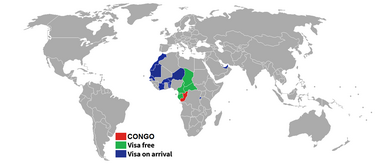
Visa requirements [ edit ]
The Republic of the Congo is not a country you can just waltz into. There are few visa-free arrangements in place, and thus, almost everyone requires a visa to visit the country .
Citizens of the following countries can obtain a visa on arrival: Benin , Burkina Faso , Ivory Coast , Mauritania , Morocco , Niger , Rwanda , Senegal , Togo , and the United Arab Emirates .
For everyone else, you must possess a valid passport and you must submit the following: two completed visa application forms, two passport photographs, airline tickets, a travel itinerary, an invitation letter from a Congolese individual or organisation (a hotel reservation will normally suffice), and proof you've been vaccinated against yellow fever .
Visa fees tend to be very expensive (The Congolese embassy in the United States charges $200 for visa applications), so plan accordingly. Congolese embassies recommend that you submit all relevant documentation (usually a month before your trip) in advance. Visas typically take 7-10 days to process.
If you hold an "official letter of invitation" you can, in theory, enter the country without a visa, but it may be difficult to obtain because there's little information available on how to obtain it.
By plane [ edit ]
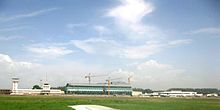
By car [ edit ]
It's safe to drive in the Republic of the Congo. A good sealed road goes north from Brazzaville , but only as far north as President Sassou's hometown of Oyo. Beyond Oyo, the roads get very bumpy and are totally impassable in the rain. It is also very hard to get a rental car that you can drive yourself.
By boat [ edit ]
Passenger and VIP ferries operate daily between Brazzaville and Kinshasa roughly every 2 hours between 8AM and 3PM. Prices for the ferries are: US$15 for the passenger and US$30 for the VIP ferry. The VIP ferry is recommended as these are brand new boats and are not as cramped. A valid visa for both countries is required in either direction. The bureaucracy at either end require some time. Entry and exit procedures in Brazzaville are "easy" and straight forward and people are very helpful in assisting to get through without troubles. In contrast, these procedures are a bit difficult in Kinshasa and depend much on whether you are an individual traveller or assisted by an organisation or an official government representative. There are also speed boats to hire, either in a group or alone (price!), however, it is not advisable to book them as they really speed across the river along the rapids.
Barges follow the Congo, then the Oubangui, rivers right up to Bangui .
Get around [ edit ]
By shared taxi or minibus [ edit ].
Ridiculously cheap shared taxis and minibuses run on an ad hoc basis between towns and villages, crammed with Congolese villagers taking all sorts of livestock for sale in Brazzaville .
By taxi [ edit ]

Taxis in the Republic of the Congo do not have a meter , which means you have to negotiate for a reasonable fare before going anywhere. Don't expect this to be an easy process if you do not possess solid French language and negotiation skills.
In the capital city, Brazzaville , taxis are white and green in colour. If you want to go to the city centre from the airport, it will cost you 3000 CFA. In the main city, however, the official taxi fare stands at 700 CFA.
By train [ edit ]

The Congo-Ocean Railway (COR, or CFCO) re-opened between Pointe-Noire and Brazzaville in Apr 2023 after a 7-year closure. It is scheduled to take 16 hours to complete the 502 kilometres (312 mi) journey. It is the only land route between Congo's two major cities.
Talk [ edit ]
The official language of the country is French . The main indigenous languages are Kituba and Lingala .
See [ edit ]

- Odzala National Park
- Gorillas in Lesio Louna Gorilla Reserve .
- Colonial and post-colonial architecture in Brazzaville .
- Sangha Trinational - a forest in the Sangha and Likouala region that is an UNESCO World Heritage Site (shared with Cameroon and the Central African Republic).
Do [ edit ]
Fish for the Goliath Tiger Fish on the Congo River — the largest fish ever caught was 56 kg.
Buy [ edit ]
Money [ edit ].
The currency of the country is the Central African CFA franc , denoted FCFA (ISO currency code: XAF ). It's also used by five other Central African countries. It is interchangeable at par with the West African CFA franc (XOF), which is used by six countries. Both currencies are fixed at a rate of 1 euro = 655.957 CFA francs.
The U.S. dollar is not widely accepted.
ATMs [ edit ]
All Ecobank ATMs in the Republic of the Congo take Mastercard and Visa card for cash withdrawal.
Shopping [ edit ]
There is an artisan mart and boutiques in the market near the BDEAC (Banque Developpement pour les Etats de l'Afrique Centrale). Really beautiful jewelry, masks, paintings, and other artwork.
All business is conducted in cash. Small change is very scarce and hard to come by. Do not accept torn or taped banknotes.
Eat [ edit ]
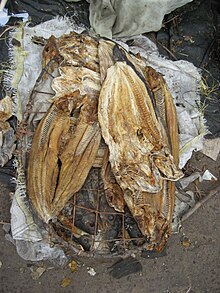
There is good and healthy Chinese food at Osaka Restaurant, in Pointe Noire. The average price for a meal is US$12-18. All meals are served in nice clean dishes, the restaurant is indoors and has AC, with a back-up generator, just in case. Some of the workers speak English and French.
There are several great restaurants in Brazzaville. Any taxi driver can take you to one of these nicer places (FCFA 5000-15 000). Most places are closed on Sundays. Expect beers to be overpriced here (FCFA 1000-2000).
Drink [ edit ]
Palm wine is a local favorite in the village. Beer is the favorite in town next to Fanta, Coke etc. There is also a local red wine (SOVINCO) imported from Gabon and the "brique", a liter of imported, mostly Spanish wine from the box.
There is a big price range on beer (FCFA 500-5,000) depending on what neighborhood and type of bar or restaurant you're in.
Produced in Congo under Heineken supervision: N'Gok (meaning "Crocodile", blond, Congolese), Primus (blond, Belgium, Central Africa), Mütsig (blond, French Alsace Region), Guinness (dark, Ireland), and Turbo King (dark, Central Africa)
Imported: Heineken and Bavaria
If the above is too much there is also water of various local and imported brands sold in 1.5 litre plastic bottles.
Sleep [ edit ]
Work [ edit ].
With incredibly mild tax laws and a huge foreign population, the Republic of the Congo has ideal working conditions, but weak political conditions and excessive bureaucracy mean that many are often reluctant to take up work opportunities in the country. In addition, unemployment is quite high (40-50%), due in large part to a poorly developed education system.
Personal connections matter greatly in the Republic of the Congo, and the importance of having local contacts cannot be overstated. This being said, it's obvious to say that nepotism is quite common here.
Many NGOs are situated in Brazzaville . If you have a background in politics or international relations, working in Brazzaville won't be such a bad idea. In addition, the country is a great place to further develop your French language skills.
The government maintains a list of sectors that are in need of investment or development. If you have any skills to offer, or if your company has anything to offer to the country, the government may be more than willing to help you out. As with any country, do your homework before getting into something.
Stay safe [ edit ]
The Republic of the Congo is generally a safe country. Crime rates tend to be low, and people can travel independently without any major worries or concerns. This said, crime such as robbery and assault remains a concern. As in any developing country, don't draw too much attention to yourself and do what the locals do. As the saying goes, "when in Rome, do what the Romans do".
Authorities [ edit ]
There are numerous police checkpoints throughout the country and it's difficult to know if you're coming across a police checkpoint since many of them are poorly marked. In the event you come across a police checkpoint, the police may ask you for your ID and they may conduct a thorough search of your vehicle. This is purely for security reasons, nothing more, nothing less.
Corruption in the Congolese police is widespread. Since members of the police earn low salaries, it's possible they may coerce you into giving them bribes or they may abuse their powers.
As with all authority figures, always remain calm, firm, and polite. If a policeman asks you to do something, just do it. Do not lose your temper if you end up meeting an ill-behaved official and do not challenge their authority.
Political unrest [ edit ]
The Republic of the Congo is one of the most corrupt and least efficiently governed countries in the world. Corruption, cronyism, and nepotism are widespread.
The Congolese have a strained relationship with their government and demonstrations against the government can turn violent . Although no major protests have occurred since 2015, keep an eye out.
Civil conflict [ edit ]
As aforementioned, many Congolese people are frustrated with their government, and this has often lead to open warfare. The most recent war was the "Pool War", in which more than 13,000 people were displaced in the Pool region. Although ceasefire agreements remain in place, frustrations with the government mean that conflict can erupt at any time.
Stay healthy [ edit ]
Population estimates for this country explicitly take into account the effects of excess mortality due to AIDS ; this can result in lower life expectancy, higher infant mortality and death rates, lower population and growth rates, and changes in the distribution of population by age and sex than would otherwise be expected. In any case use your common sense: do not have unprotected sex.
The likelihood of getting malaria is very high if effective preventative medication is not taken. The malaria caused by Plasmodium falciparum can be very serious. Medical attention should be sought if any symptoms are shown.
Tap water is not drinkable, if it's even running at all.
Medical care is substandard throughout the country. Hospitals lack modern equipment, necessary medical supplies and medications, and well-trained physicians, nurses and support staff.
- Netcare Clinic: B.P. 2422, Brazzaville, Tel: 547 0911 (Main Line) or 679 6711. This facility is a franchise from South Africa. It is clean, has facilities for 3 private rooms, an ambulance, a one bed emergency room, basic radiography, pharmacy and a laboratory with microscopy, haematology, and basic chemists. There are two main doctors, Dr. Ali, a Lebanese doctor who considered as the best medic in Netcare, and Dr. Stephan, a French doctor who is also a good doctor.
- Pharmacie Mavre Tel: 81 18 39. Located in Centreville, next to the Cabinet Dentaire building
Brazzaville has many pharmacies, but Pharmacie Mavré is recommended. Please remember to always check the expiration dates on boxes before purchasing any products.
Respect [ edit ]
White travelers should take care while travelling in the Republic. Racial tension and discrimination is not uncommon here, so be safe and keep to yourself.
Connect [ edit ]
You can talk to your loved ones using any of the three mobile operators MTN, CelTel (now Zain), or Warid.
The local call rate are relatively cheap and cost you around FCFA 20-20 per minute.
- Has custom banner
- Has mapframe
- Has map markers
- Go listing with no coordinates
- Listing with Wikipedia link but not Wikidata link
- Outline countries
- Outline articles
- Country articles
- Central Africa
- All destination articles
- Has Geo parameter
- Pages with maps
Navigation menu
Those who make the effort to visit the Congos will be surprised at a genuinely hospitable group of people who have adapted to life in difficult situations. Optimism is easy to find, and foreigners arriving with the same attitude will not be disappointed. Sean Rorison , author of Congo: the Bradt Guide
The Congos, mysterious, wild and scarred by their troubled history, are proving increasingly irresistible to travellers with a taste for true adventure.
Where guns and disease once ruled, there are now opportunities to discover astonishing national parks and vibrant communities – from the culture and concrete chaos of Kinshasa to the far reaches of volcanic mountains populated by mountain gorillas and okapi.
Health and safety in the Congos
People new to exotic travel often worry about tropical diseases, but it is accidents that are most likely to carry you off. Road accidents are very common in many parts of the Congos so be aware and do what you can to reduce risks: try to travel during daylight hours, always wear a seatbelt and refuse to be driven by anyone who has been drinking. Listen to local advice about areas where violent crime is rife too.
Preparations
Preparations to ensure a healthy trip to either the DR Congo or Congo require checks on your immunisation status: it is wise to be up to date on tetanus, polio and diphtheria (now given as an all-in-one vaccine, Revaxis, that lasts for ten years), typhoid and hepatitis A. Immunisations against meningococcus and rabies are also likely to be recommended. Proof of vaccination against yellow fever is mandatory for entry into the Congos. The World Health Organization (WHO) recommends that this vaccine should be taken by everyone over nine months of age, although proof of entry is only officially required for those over one year of age. If the vaccine is not suitable for you then obtain an exemption certificate from your GP or a travel clinic although you would have to consider if it was wise to travel to a high-risk country for yellow fever without protection. In the last ten years there has been an almost 100% fatality in non-immune travellers going to yellow fever endemic areas who have contracted the disease.
Immunisation against cholera may be advised for longer visits, especially if you are intending to stay in poorer areas. The oral cholera vaccine (Dukoral) gives about 75% protection and for adults and children over six years of age the course consists of two doses given between one and six weeks apart and at least one week before entering the area. Coverage is said to last for about two years. For those aged between two and six, three doses are needed, which requires a boost after six months.
Travel clinics and health information
A full list of current travel clinic websites worldwide is available on www.istm.org . For other journey preparation information, consult www.travelhealthpro.org.uk (UK) or http://wwwnc.cdc.gov/travel/ (US). Information about various medications may be found on www.netdoctor.co.uk/travel . All advice found online should be used in conjunction with expert advice received prior to or during travel.
Poverty is rampant, but outright begging is generally only seen in the capitals Kinshasa and Brazzaville; though once a foreign face is seen anywhere across the region other beggars can quickly appear. Citizens of both Congos are less likely to beg than in other countries and are more likely to try and extract cash and gifts through other means – such as overcharging. Set prices in taxis beforehand, and if possible have someone else negotiate prices for long-distance travel and tip them afterwards. When crossing frontiers, it is likely that your luggage will be searched by hand and things can easily go missing. Keep anything of value in your immediate possession, and be vigilant at all times with things you are carrying.
The largest problem any visitor will encounter is corruption – it is endemic across the two countries, a veritable institution, and often the only way any officials receive money since when they do get paid it can be months behind schedule. Unfortunately when given a uniform and badge of some sort, people in the Congos will see this as licence to stop and harass anyone and everyone for money – and as a foreigner you can be guaranteed that you will be singled out. Remember that you are primarily seen as an opportunity by people you encounter, and friendliness can go a long way. However, I recommend against offering anything to anyone initially – I do not condone bribery and extortion and this habit can only make matters worse. This is a central problem with the Congos, and unless you want to depart empty-handed, limiting your generosity to those you meet is absolutely necessary.
Remain polite at all times – no-one in the Congos responds well to anger or threats and losing control will only make your situation worse. Realise that random arrests, being pulled aside, and constant poring over your various documents all comes down to a quest for cash. If you keep this in mind and aim to mitigate the amount you need to pay, your journey will be that much more enjoyable.
Being courteous, affable, but ultimately lacking as much money as they want to take from you will be your best approach. Carrying a wallet with a few dollars between checkpoints can get you through tough situations – bring small notes in American dollars, Central African francs (CFA), or Congolese francs (Fc) and hand them a wad of bills and quickly be on your way. They will not count them in front of you – they will be happy that you complied.
Female travellers
Females travelling solo through the Congos are something of a rarity, but if you are obviously foreign, you should take the same precautions as males. However, women’s rights have a very long way to go in these regions and it is not recommend to travel outside of the main towns and cities on your own – make some friends, go with a tour, have someone you trust come along. Going around alone at night is simply asking for trouble.
Some women can be seen in Kinshasa with Congolese boyfriends, and given the dichotomy between men and women it may be necessary to have some sort of male accompaniment to help a foreign woman in her travels around the country. Venture further afield and a solo female traveller will be quite the novelty, but like any traveller who is too far from the radar it could appear as an opportunity too good to pass up for local thieves. While a male might get away with fewer precautions when travelling around the countries alone, a female should make sure that her itinerary is known to someone inside the country. Make arrangements for people to meet you along the way, and involve others in the decision-making process of how to travel around. Hire motorbike and taxi drivers based on recommendations, not simply by flagging one down on the street.
Overall, crime is as much an issue in the two Congos as it is anywhere else in Africa – take care of your belongings, even in your hotel room, and be careful with your money as well as anything of value. Do not dress too extravagantly when in public and do not carry too much money while out on the town. Be careful at night and secure private transport when out in any town after dark, especially in Kinshasa. Avoid public transport altogether after dark in any of the big cities. Never walk around at night in any major towns, though Congo-Brazzaville is a far safer country than the DR Congo in this respect. Remember that you are more than likely being watched at all times, and wandering alone into a quiet neighbourhood can easily be seen as an opportunity to those less fortunate.
Large fields of mines left over from the days of UNITA litter the border between the DR Congo and Angola. Furthermore, there are reports of landmines in Cabinda, and the frontier regions of Congo-Brazzaville. All of these are decades old and, while usually not well marked, are well known by locals. Some farmers in Congo-Brazzaville have refused to work on certain fields because of the landmine risk. A more insidious and difficult aspect of the landmine problem across the Congos exists in the east: in the Kivus, new minefields were laid during the conflicts of 2003 and 2004. Some roads have been mined, and it was an active part of the conflict to plant mines around markets, hospitals, houses and footpaths, deliberately targeting civilians as they went about their daily lives.
Travel and visas in the Congos
The catch is that if you apply for a tourist visa overseas, they require more documentation regarding your stay – including a confirmed hotel reservation, confirmed round-trip tickets, references from your home country and possibly even a bank statement. Charges for the DR Congo visa can be high, but on the other hand, arriving at a border crossing in the DR Congo with a visa already in hand can save you a large amount of trouble. In my experience none of the documentation required for obtaining a visa in your home country is checked upon arrival in the DR Congo.
Visas are required by every nationality for entering the DR Congo. When crossing from Brazzaville to Kinshasa, Bujumbura to Uvira, and Rwanda into the eastern DR Congo visas may be issued on arrival for a fee – sometimes this has been redacted, however, depending on how relations between their neighbours ebbs and flows. Visas are not available at any airport.
Getting there and away
Kinshasa is the major point of arrival in the region and well connected to the outside world: from Europe there are frequent flights from Paris and Brussels on Air France and SN Brussels Airlines respectively. Regionally there are flights to almost every nearby capital such as Luanda (with TAAG Angolan Airlines ), Libreville (with Air Gabon ), Douala (with Cameroon Airways ), and Hewa Bora Airways does a short hop across the Congo River from Brazzaville. There are also reliable flights on major African airlines to Johannesburg, Addis Ababa and Nairobi with South African Airways , Ethiopian Airlines and Kenya Airways . Lubumbashi is gaining ground as an international port of entry. Arrival by air can be a harrowing experience – if you have people to meet you it will be less of a hassle, but chaos, bribes and random searches of luggage (with things going missing afterwards) are all too common. Have your luggage locked and wrapped prior to checking in, and be prepared for a shock of the senses the moment you depart the aircraft. Have US dollars ready in small denominations, and allow an hour or two for some friendly arguing with officials.
Republic of Congo
To the Republic of Congo, your options are limited for flying. The only airline offering any real frequency to the country is Air France , which flies a small aircraft three times weekly direct from Paris to Pointe Noire. They also fly a much larger plane four times weekly to Brazzaville. However, their prices reflect their monopoly on this route – flying direct from Paris to Congo will set a traveller back a small fortune. You can also reach Brazzaville with Ethiopian Airlines via Addis Ababa, for about a third of the price, when the ticket is booked a few months ahead.
Passenger liners are a thing of the past to Boma, but cargo shipping is alive and well – though the usual historical problems have never really gone away, with the rail line from Boma to Kinshasa being a little unreliable at the best of times. Nonetheless shipping has become a critical industry from the coast and into Kinshasa.
If you need something heavy sent down, you can get it shipped to Pointe Noire quite easily. Pointe Noire is, in fact, the only deep-water port in Africa south of Dakar and therefore sees plenty of ships passing through.
Overland and border crossings
The DR Congo has numerous border crossings with its nine neighbours, and most of them will let foreigners cross. To Congo-Brazzaville , you can either take the public ferry for very little money or arrange a ride on a canôt rapide , which costs around US$20 and includes a person who will handle your border formalities for you – which is a good thing in a country where doing it yourself can mean any number of extra ‘fees’.
To the Central African Republic , the three primary crossings from northern DR Congo into the CAR are from Bangui to Zongo, Mobaye and Bangassou. Relations with the CAR have effectively returned to normal, but crossing to either Mobaye or Bangassou should be assisted by local advice – even at the crossing near Zongo, this will not be a charge-free excursion. Keep in mind that to reach Sudan from the DR Congo you’ll be crossing from war-ravaged Haut Uele Province into war-ravaged southern Sudan.
From the DR Congo , frequent ferries run between Kinshasa and Brazzaville both on fast motorboats called canôt rapides , and on the crowded public ferry. There are boats that head south from Cameroon into Ouesso and onward boat transport south to Brazzaville. Cabinda ’s border with Congo at Pointe Noire is open, provided you are willing to pay for access: about US$100 will get you across, not including a fee for a vehicle. From Gabon there are two options that bring you to Dolisie: the most common route is from N’Dende south, taking about three days. Less common is from Bakoumba to Mbinda, and then south via a once-weekly train connection – border officials on the Gabonese side are famously corrupt and transport is intermittent. It is also possible to cross from Franceville to Okoyo, though the road is bad and this area is known for outbreaks of the Ebola virus. From Cameroon head towards the southeastern most corner of the country, to a village called Bolozo, and then cross the river to the large town of Moloundou. Motorboats can also be hired for a journey along the river to Ouesso.

Getting around
Travel around the Congos enough and you will have no choice but to purchase a domestic flight – the roads, when they exist, are bad and certain regions are, as mentioned, still emerging from war.
Good old Kisangani barges run from Kinshasa to Kisangani these days, sometimes, unreliably. At the time of writing the frequency was three times a year, with an estimated travel time of one month (this does not count the organised tour that does the route from Kisangani to Kinshasa, which takes two weeks). Further south, the adventurous can try their luck at local boat transport to Kindu, but this cannot be guaranteed even under the best conditions. There is usually some sort of transport along the waterways of the Congos, but this is often slow – though in some areas such as the central DR Congo, it may be the only real option available.
Roads in the Congos, when they exist, vary from bad to virtually non-existent. Road transport between major towns is frequent enough, often on massive trucks that you can see packing for long journeys in Kinshasa and Pointe Noire. In Katanga around Lubumbashi the roads are quickly improving from the border to Likasi, facilitating mining operations, but expect the worst when travelling by road in the DR Congo. If you have your own private transport, this is a good start, but you will need permits, local advice and nerves of steel to travel serious distances overland. For short journeys in the same region, for example Dolisie to Pointe Noire or Beni to Bukavu, road travel is tolerable. Other routes are quickly being opened up to meet the needs of construction companies across the east, and Kisangani to Bunia, as well as Kisangani to Bukavu, are now more or less feasible.
Congo-Brazzaville’s famous rail line to the west coast is running on a regular three-times-a-week schedule with two first-class trains and one second- class train. They begin their journey overnight and arrive in Pointe Noire the following evening. The first-class trains are, however, no cheaper than an equivalent flight ticket and don’t expect a pampering for those seats. In the DR Congo the rail service is slowly coming back. From Likasi to Kalemie there is a passenger rail service available, and is accompanied by security through the volatile region of eastern Katanga. A comfortable first-class train service runs from Lubumbashi to Kananga, and from there one can change over to another decent train to Ilebo. There is also a very poor rail line from Kolwezi west to the border with Angola, but no way to cross into that country from there. Trains arrive and depart on a fluctuating schedule and you could be spending days waiting for the train’s arrival. In general, it will depart the day after it arrives.
When to visit the Congos
The Congos have two seasons: dry and rainy. In the dry season the roads tend to be better for overlanding, though it can get hot and dusty at times. In the rainy season some roads may be impassable due to mud and flooding, so visits into the deep rainforest are usually done in the dry months.
There is an exception to this as the southern reaches of DR Congo are in the African savanna belt and experience a later rainy season, but can be oppressively hot in the summer.
There are only two seasons across the Congos: dry and rainy, though depending on where you are, the times for these will change. In the rainforest the rainy season arrives like clockwork in the winter, from about October to April; frequent downpours and scattered clouds will greet the traveller, and could heed movement across the moist and muddy lowlands.
In general, through the northern belt of equatorial rainforest the rainy season runs from October to April, and in the Katanga region the rains come from December to March.
Monsoon rains are the norm, meaning short outbursts of rain that will last one or two hours and drench everything in sight. These tend to occur in the afternoon and early evening.
Temperatures in the plains of the south of DR Congo can be as much as 35°C in the summer, but averaging about 25°C across the rainforest, with heavy humidity. In the mountains along the east it can get cooler in the day and evening, sometimes going as low as 10°C.
Things to see and do in the Congos
Brazzaville.
At times quiet and quaint, it is often a sleepy city. Its centre is walkable, and numerous cultural sights are within a short distance of each other. The citizens of Brazzaville have an easier task with their well-planned capital, and many travellers find it to be a welcome escape from whatever may be transpiring across the river in Kinshasa.
Yet Brazzaville itself is just emerging from its own troubles: pay attention to what lies beyond some rusted fences of corrugated aluminium and you will see destroyed towers, abandoned office blocks, torn-up roads, and other telltale signs of a civil war that is only barely in the past.
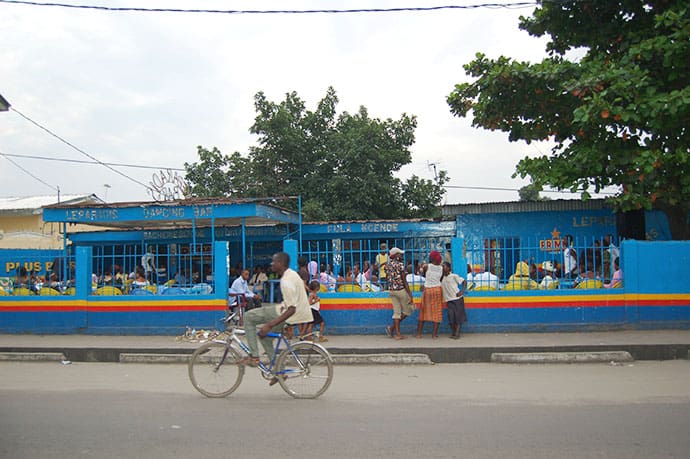
While what occurs in Kinshasa may at times seem monumental and right in plain view of everyone, Brazzaville’s problems seem forgotten and buried in the background – even by its own citizens. The city seems to have an urge to move on, and while Congo’s own political problems are still very much unresolved, the capital has in many ways restored the laidback atmosphere that its reputation was founded upon.
The city has seen plenty of attention paid to formal cultural institutions, having been the epicentre of France’s investments in central Africa for nearly a century. It rarely has the same level of traffic and noise as Kinshasa; crime barely exists, and a multi-culturalism is present in the city that Kinshasa has yet to master – European, Arab, Asian and African residents all go about their daily business beside one another, without armed guards and walls of razorwire between them.
Families from around the world have migrated to Brazzaville, set up businesses and live in the city. It is a simpler place than Kinshasa, and better integrated in every manner.
Black volcanic rocks permeate Goma’s landscape, lending it a unique look amongst the towns and cities of the DR Congo. They are everywhere – used to build walls, roads, crushed and reconstituted into bricks; the city is a mixture of diffused black and grey colours surrounded by the lush green hills which create some of the best farmland in Africa – and, on occasion, nearby volcanoes erupt and demolish the town in its entirety. Huge lava fields northwest of Goma attest to the precarious position that the city maintains.
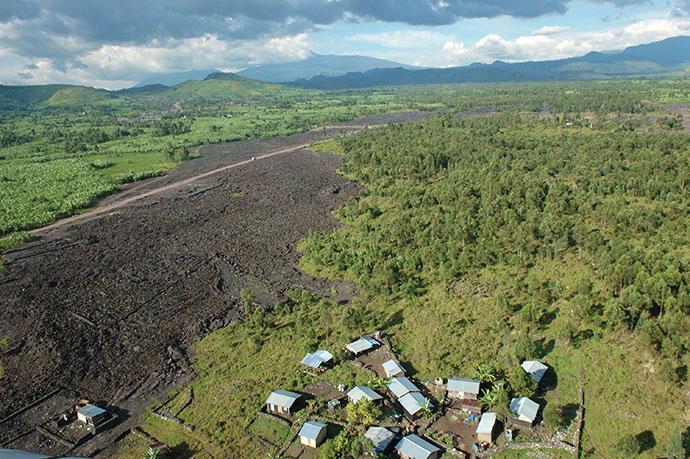
Goma’s town centre was destroyed in 2002 by Mount Nyiragongo, the fourth time in a century that a major eruption had occurred in the region. It erased whatever may have existed of the area in decades past. In some older single-storey buildings, the attentive will notice that they are actually the top level of what were once two-storey buildings.
The city plods along, 2m higher than it was at the beginning of the millennium, with an increased focus on construction and development. It has been designated as tourist capital of the DR Congo, and will undoubtedly be the first port of entry for large numbers of visitors to the country. While unique in its own right as a town built on a lava flow, it is really the surrounding sights that make Goma so important – specifically Virunga Park and Lake Kivu.
Rising out of the jungle unlike any other sight in central Africa are Kinshasa’s towers, its lights, its chaos, its squalor. After spending weeks or months inside the far reaches of the Congos and arriving onto the paved yet pot-holed streets of the capital, one can easily be overwhelmed – quiet evenings of darkness are overtaken by raucous clubs, cluttered evening markets, throngs of touts and beggars.
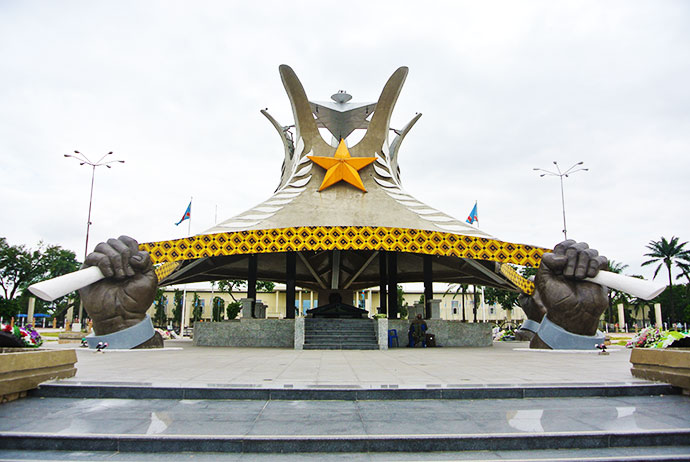
Truly maddening traffic unseen anywhere else in the Congos clogs the streets – from barely operating minibuses to convoys of tinted cars, thousands of people on the move in every direction, unknown faces of unknown people lurking in the corners of abandoned buildings, all living side by side in Kinshasa.
It is a cultural Mecca, a calling place for the dreams and fortunes of all Congolese from either country of the same name. Inundated with an influx of refugees as war raged in the east, as well as exploding with an expatriate population arriving to bring stability to the nation, its numbers have swelled beyond any previous notions of size. It is said that now, Kinshasa is the world’s most populous francophone city: surpassing Paris and Montreal, and almost exceeding both of them combined. It is still a city of deep divisions between rich and poor, of garish excess and poverty living as neighbours, with the protected enclaves of a few international hotels, embassies and golf courses keeping the huddled masses at bay. It is as diverse and intimidating as any of Africa’s largest cities. It is definitely not a place to miss – and indeed, it is hard to be in the west of DR Congo without passing through.
Kisangani River
On your list of things not to miss in the DR Congo should be the Wagenia fishermen, doing their business just in front of the Wagenia Falls. These villagers have been using an interesting tactic of catching fish along the river with large conical baskets suspended from wooden frames across the river.
It’s a unique sight and well worth visiting. The fishermen have taken it upon themselves to provide guiding tours to anyone who shows up, and charge US$30 for the privilege. There is a village on a small island in the middle of the river, and they may convince you to take a pirogue across and meet the chief; if that’s your interest it should run to an extra US$20.
Lubumbashi is a unique city in the DR Congo: with clean, wide streets, its citizens have taken an active interest in the appearance of their town.
The old colonial façades are recently painted, squalor is at least hidden away rather than in direct sight. It has two notable religious landmarks, a pleasant downtown centre, and a wide variety of amenities for an ever-increasing number of foreigners who pass through.
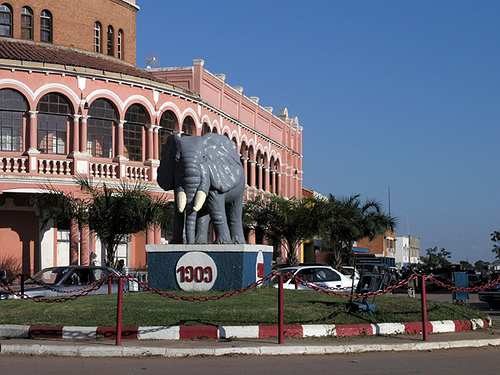
It’s a pleasant place to spend any amount of time, and indeed the attitude towards those going about their business in Lubumbashi is seemingly more relaxed than that of cities further north.
The anglophone influence, as well, is undeniable here. Many people are prone to speak some English, with Zambia only a few hours’ drive away. Most Katangese around Lubumbashi have at least visited their neighbour, and are more in touch with the world of English Africa. This makes it easier for the anglophone to get around, though corruption is just as much a problem as anywhere else in the nation.
Nouabalé-Ndoki National Park
This is quickly becoming a prime attraction for visitors to Congo, bringing tour groups directly into the Pokola base camp and on guided tours from there in. In 1990, it began as an extension of the Dzanga-Sangha Special Reserve in the Central African Republic and was initially simply a faunal reserve; as a result of the efforts from conservation groups worldwide, it has since become a fully fledged national park.
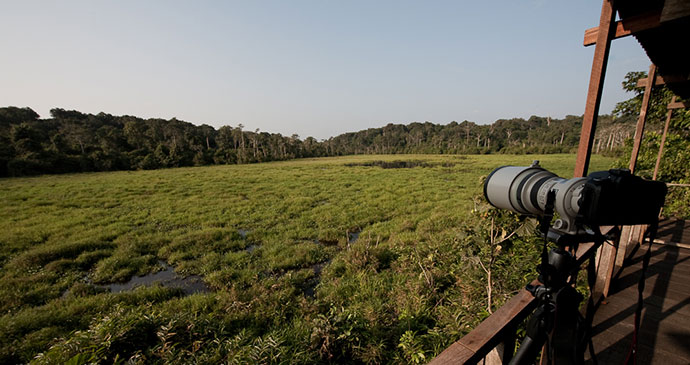
On occasion this area is referred to as the Sangha Tri-National Reserves, with the Lobeke National Park in Cameroon further extending the protected area. WCS Congo has hired several dozen Ecoguards to monitor the entire reserve and in so doing reducing the frequency of illegal hunting and logging when compared with other reserves and parks throughout either Congo. The guards work closely with the Ministry of Forest and Environment in Brazzaville, and the ministry has ensured that the park remains a protected region.
All of this means that Nouabalé-Ndoki is quickly becoming a very popular place to witness one of the last undeveloped wilderness regions on the African continent. It has several villages within its boundaries, including Pygmy settlements, and these people have also been enlisted by conservation groups to protect the landscape.
Large mammals are generally undisturbed in the area, and due to a well-maintained airstrip directly on the edge of the park in addition to regular commercial flights from Brazzaville, it has become easily accessible for those interested in visiting.
Pointe Noire
A city like no other in the Congos, Pointe Noire is a strange adjustment from the usual grinding difficulties that punctuate travelling in the region.
Sitting as a bustling medium-sized city on the far west coast of central Africa, it is a unique place – with beautifully paved streets, numerous towers, piles of beautifully painted mansions and more private cars, restaurants and discotheques than the rest of the country combined.
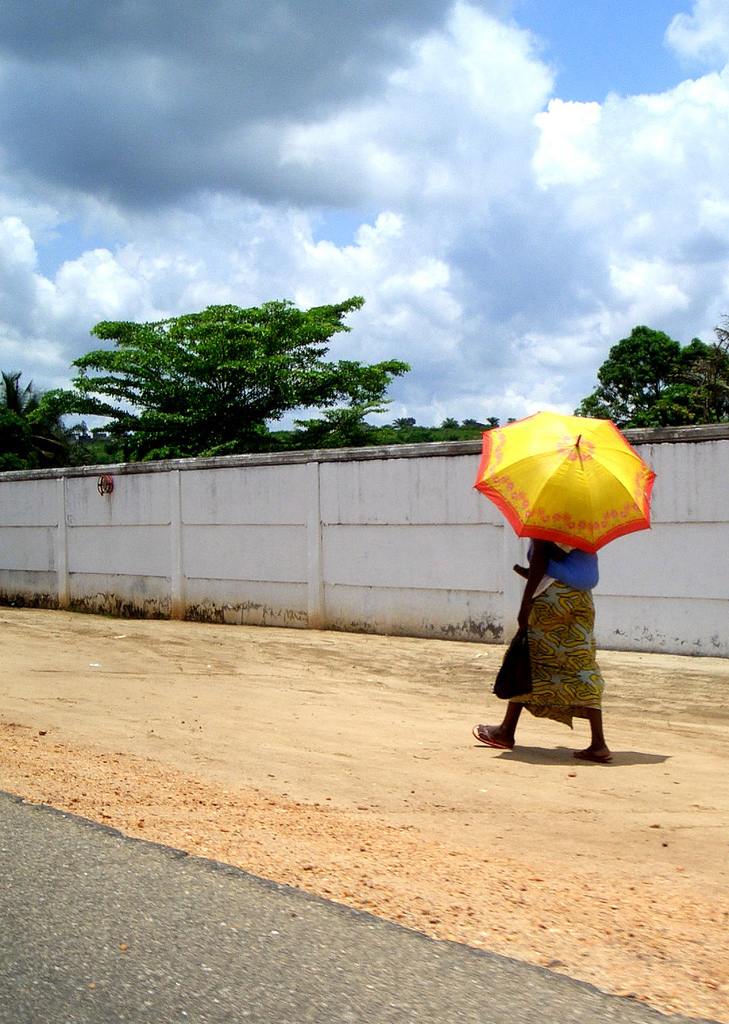
It can be disconcerting to see the nation’s wealth concentrated so heavily in one place, and even more so given that these people never had to endure the open combat that Congo’s other two major cities, Brazzaville and Dolisie, struggled to emerge from.
The Congo River
Stretching from the Atlantic Ocean and slowly winding its way in a lazy coil eastward is the Congo River, bisecting both countries and a lifeline for the deep interior of central Africa.
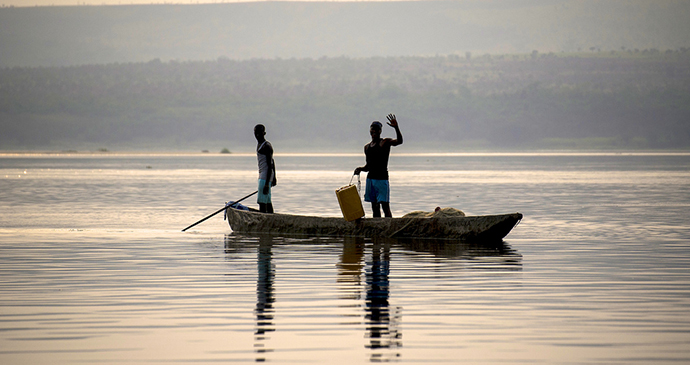
Second longest on the continent at over 4,300km, it stretches from the hills near Lake Tanganyika northward, then eases west and then south again to drain into the Atlantic. Two sets of rapids make the river impossible to navigate directly from source to sea, and the widest section is between the almost-lake formation of Malebo Pool and the falls near Kisangani.
The bays along the ocean have made excellent harbours and are home to a vibrant economy based on fish and other resources.
The Salongas
In fact two parks located in the heart of the DR Congo, Salonga North and Salonga South, the Salonga Park stands as one of the most untouched regions of the country. Its focus is the protection of the equatorial forests and wetlands that occupy the middle of the DR Congo, criss-crossed with far more rivers than roads.
It is currently the largest rainforest park in Africa, occupying over 36,000km 2 . It was designated as a natural reserve in 1933 and became a national park in November 1970 under Mobutu Sésé Seko. UNESCO added it to the World Heritage List in 1984.
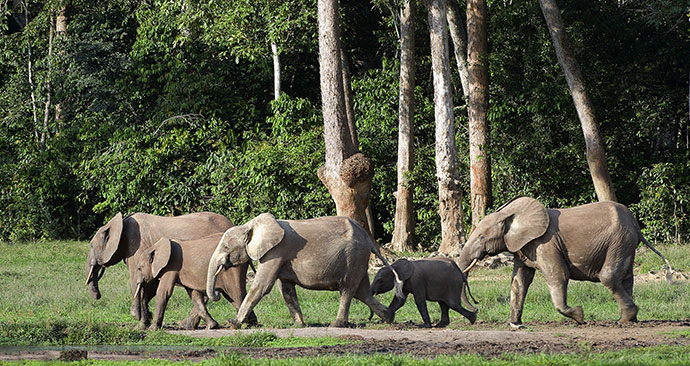
A 45km-wide corridor splits the two parks, allowing the local populations to navigate the region without disturbing the nature reserves. A road follows this corridor southeast from Boende, though like most roads in the DR Congo, it is barely functional. Fewer than 1,500 people live within the parks themselves.
The Salongas are home to some exceptionally rare creatures, including the bonobo, a species unique to the region. Also look for the slender-snouted crocodile, more forest elephants, giant pangolins, and some of the largest remaining hippo populations.
Birdlife is vibrant, and the rare Congo peacock makes its home in the region. Other large mammals common to the DR Congo are in the Salongas as well – buffalo, bongo, leopard and duiker have all been recorded in the vicinity.
Virunga National Park
If there is one park in all of Africa that you should visit, it is Virunga. This is more than mere hyperbole: it is easily the most varied region on the continent, if not one of the most varied on the planet. It is home to two of the world’s most active volcanoes, the largest remaining population of mountain gorillas, and a mountain range that boasts the only glaciers in Africa.
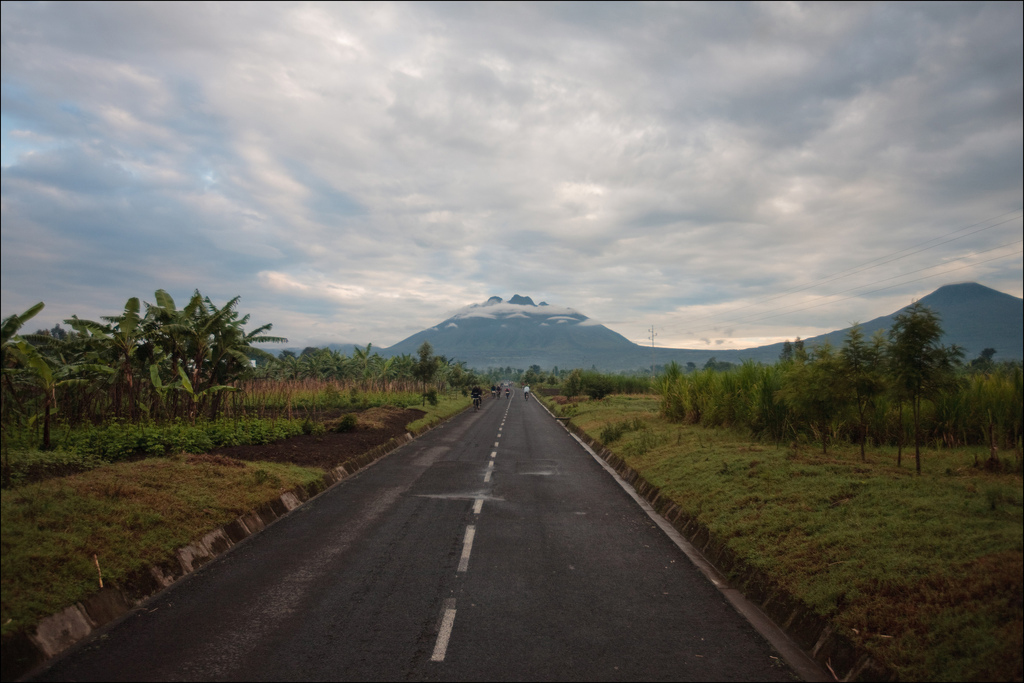
Also it’s the only park in the world to have populations of three great ape species: the mountain gorilla, the lowland gorilla and the chimpanzee. These are only the highlights: there are also the Rwindi Plains, a great place for a classic east African wildlife excursion; and Lake Edward, still one of the best places to see large groups of hippos going about their daily activities.
There is also Mount Tshiaberimu, with a small population of gorillas that was only habituated to human presence in 2001 and, according to research, could be a new subspecies, and there is also the Tongo Chimpanzee Reserve, the first place of its kind to protect the natural habitat of this creature.
Related books
For more information, check out our guide to Congo :
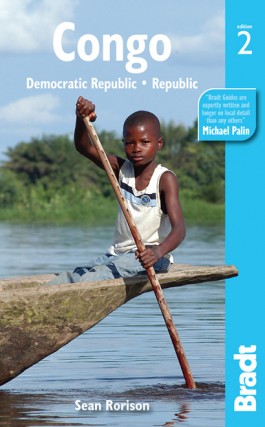
Related articles
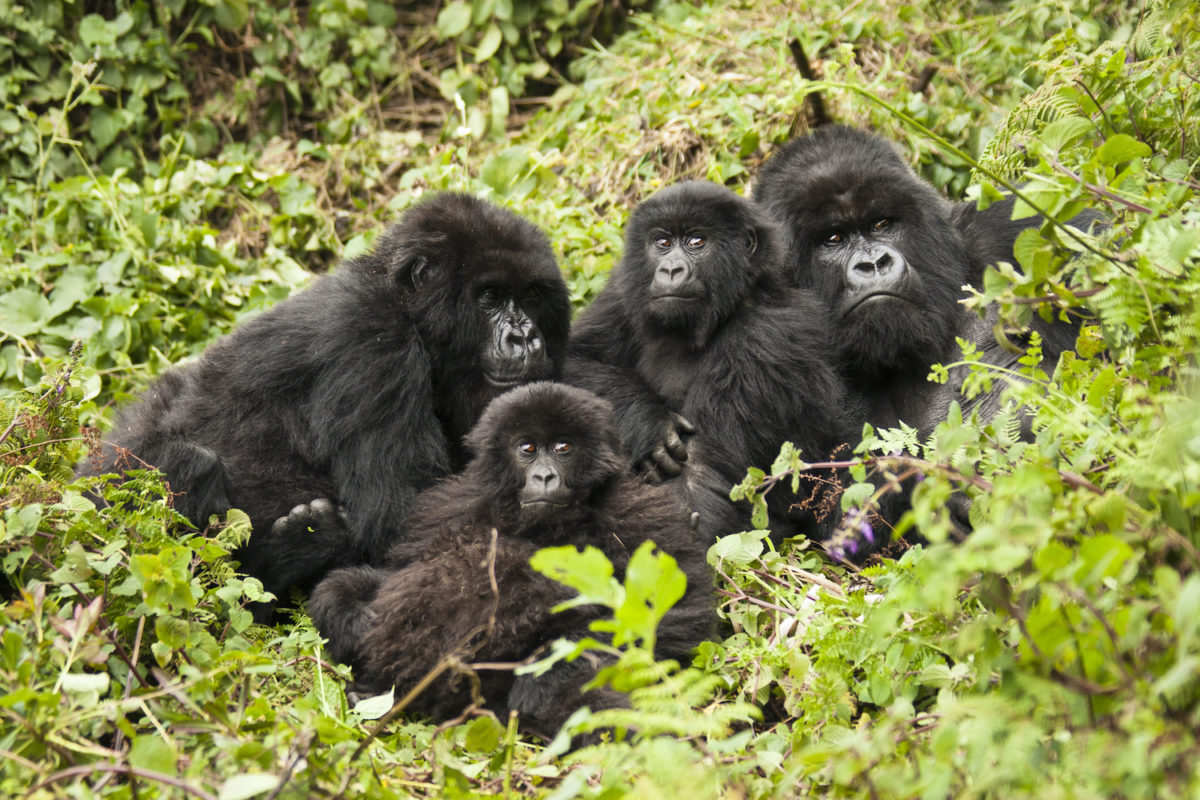
Nature’s gentle giants: a comprehensive guide to gorilla tracking
For many, gorilla tracking is a spine-tingling wildlife experience without peer.
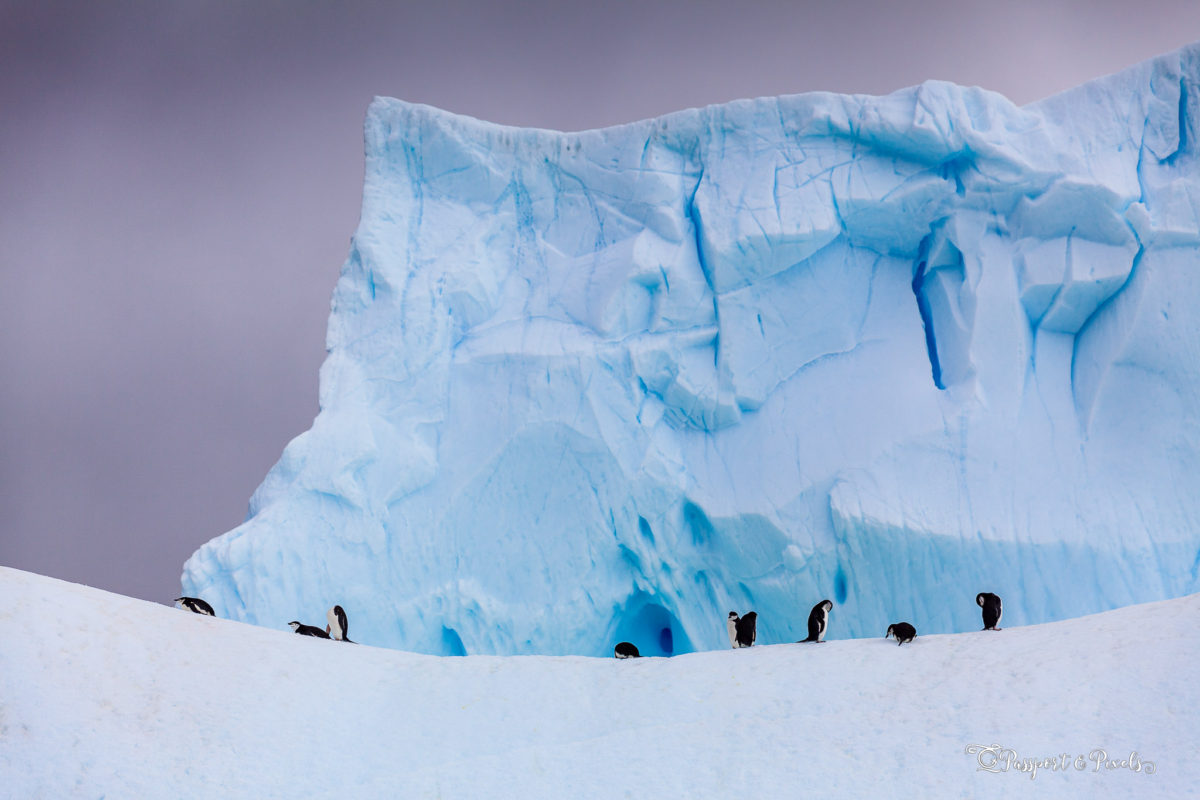
“When I’m working with my camera, I’m in my happy place”
We talk to Bella Falk of Passport & Pixels — our Photographer of the Month
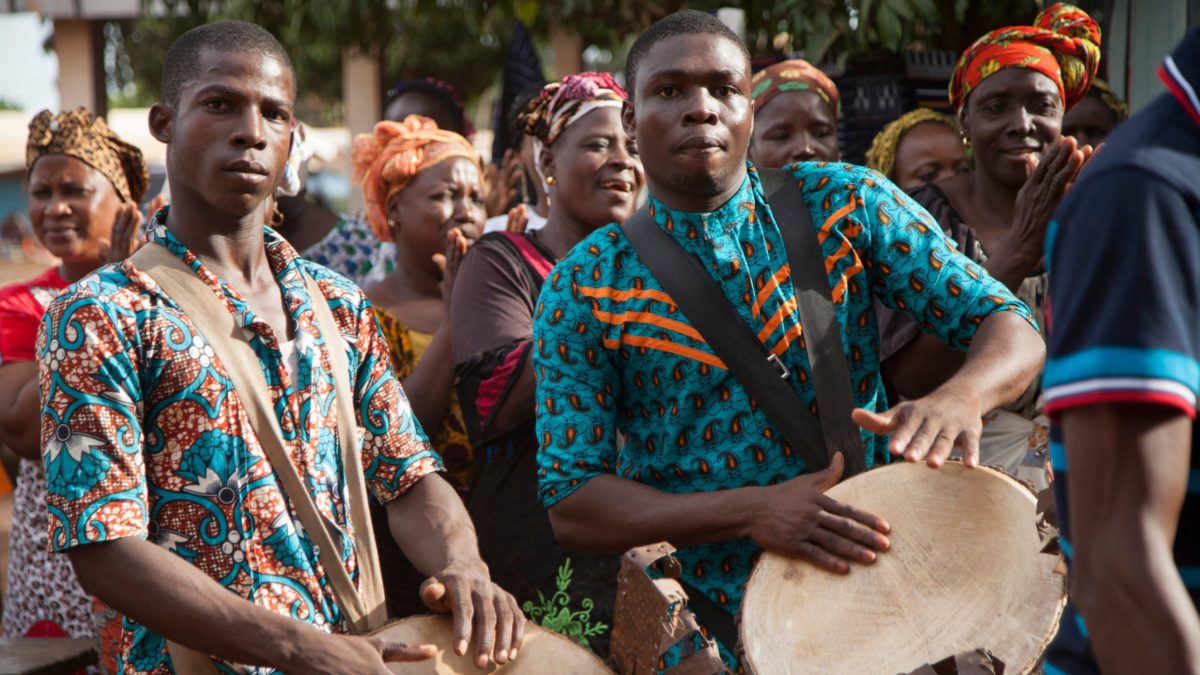
A musical tour of Africa
Philip Briggs shares some of his favourite tracks from across the continent

Democratic Republic of Congo
Carpeted by huge swaths of rainforest and punctuated by gushing rivers and smoking volcanoes, the Democratic Republic of Congo (DRC, formerly Zaire) is the ultimate African adventure. As much a geographical concept as a fully fledged nation, DRC has experienced one of the saddest chapters in modern history, suffering a brutal 20th century of colonial exploitation, authoritarian madness and what has been dubbed Africa's first 'world war', which finally ended in 2003 with the rise of the Kabila political dynasty.
Attractions
Must-see attractions.
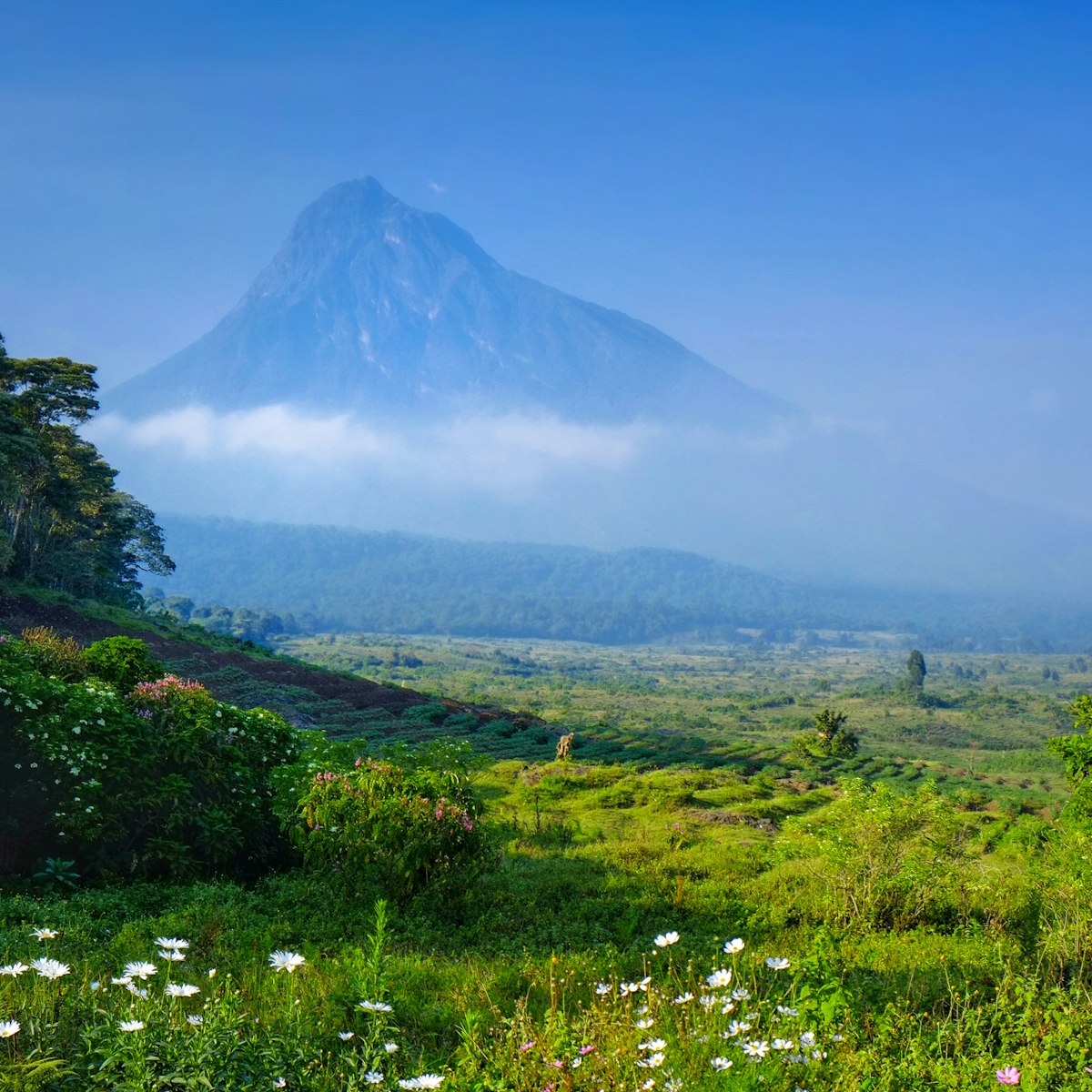
Parc National des Virunga
Eastern DRC
DRC's magnificent calling card is Virunga, Africa's oldest national park and home to mountain gorillas, chimpanzees and the incredible, active Nyiragongo…
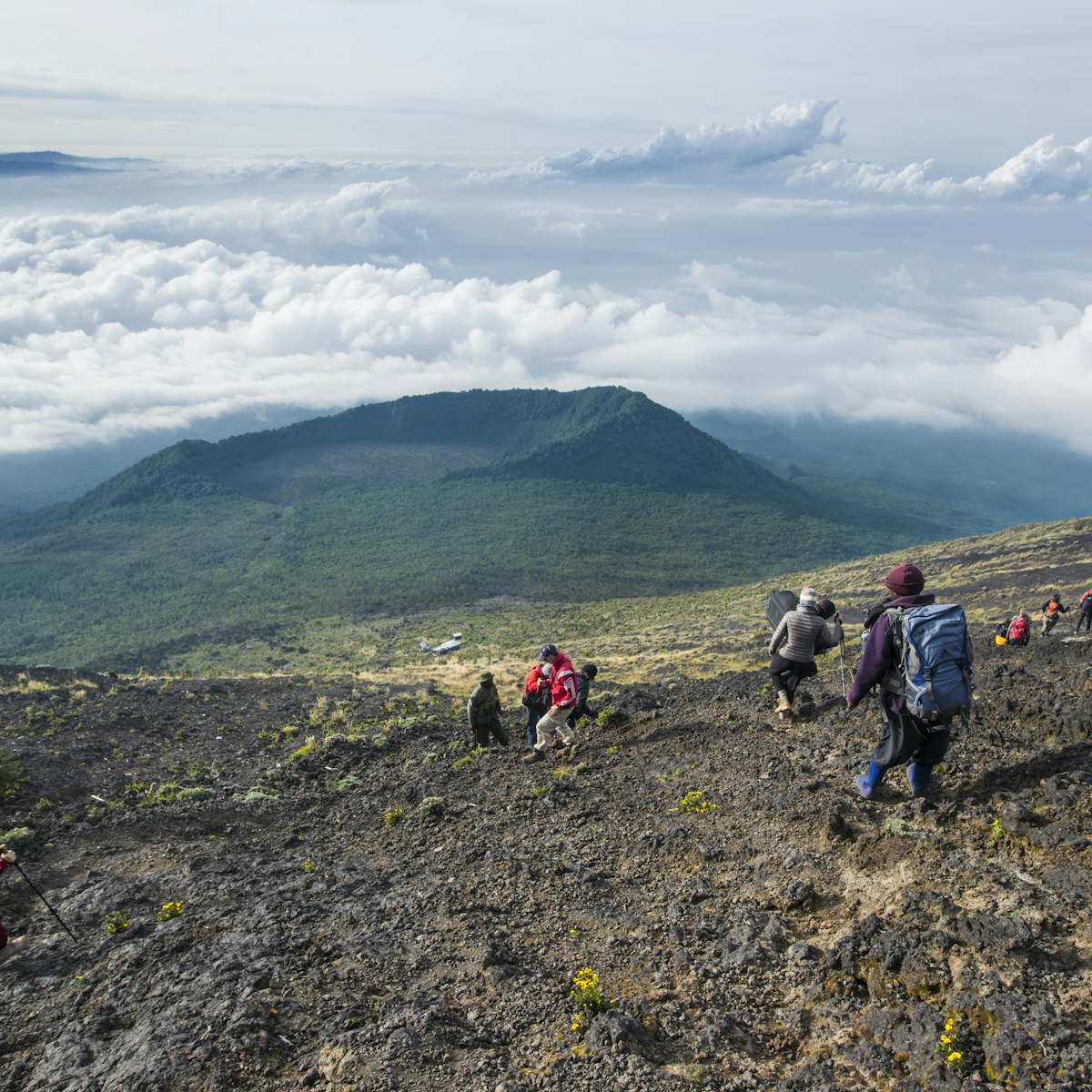
Perhaps DRC's most magnificent single sight, active volcano Nyiragongo soars above the city of Goma and the surrounding Virunga National Park and sends…
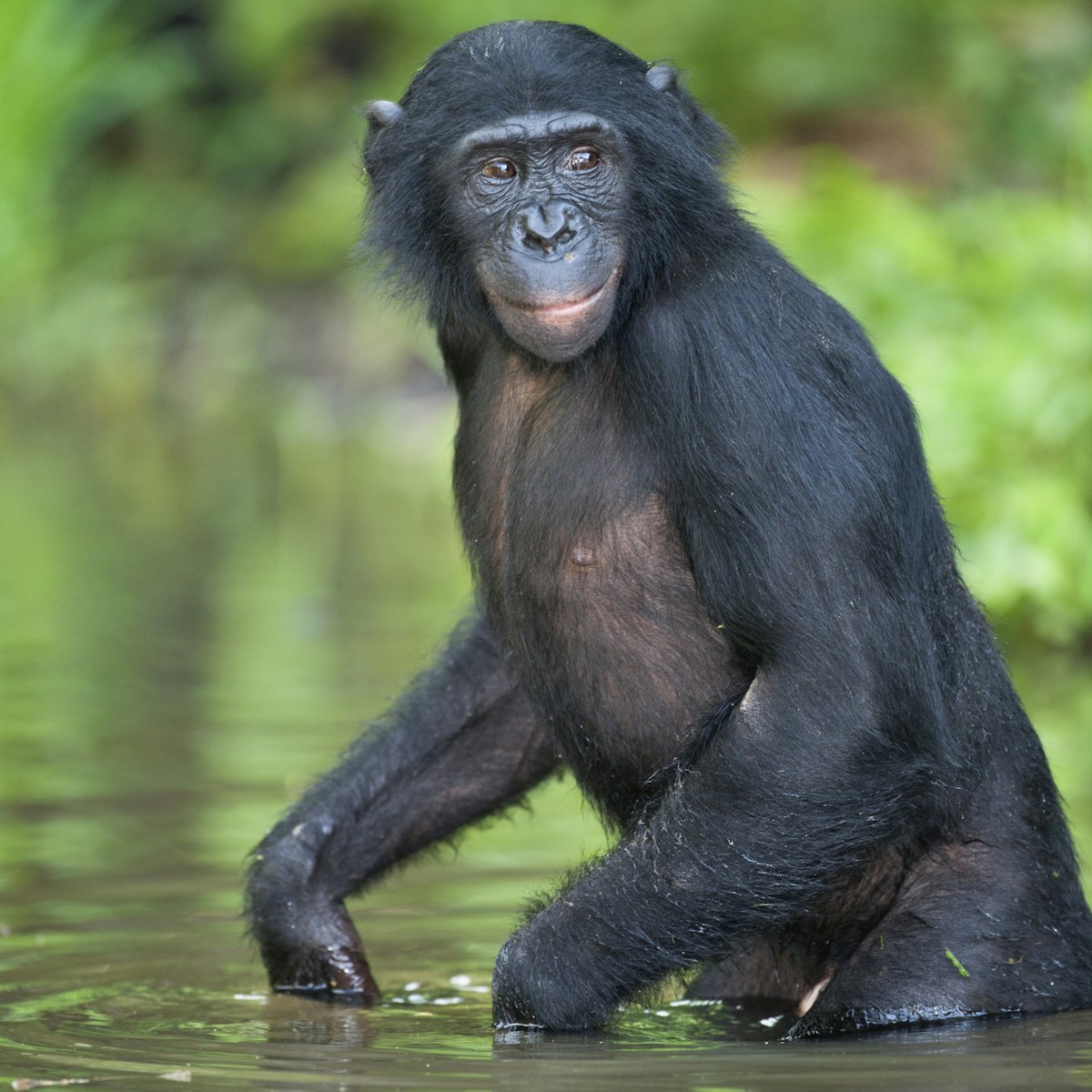
Lola Ya Bonobo Sanctuary
Ninety minutes west of Kinshasa, just beyond the city's sprawl, this excellent project provides a home for orphaned bonobos. Long thought to be…
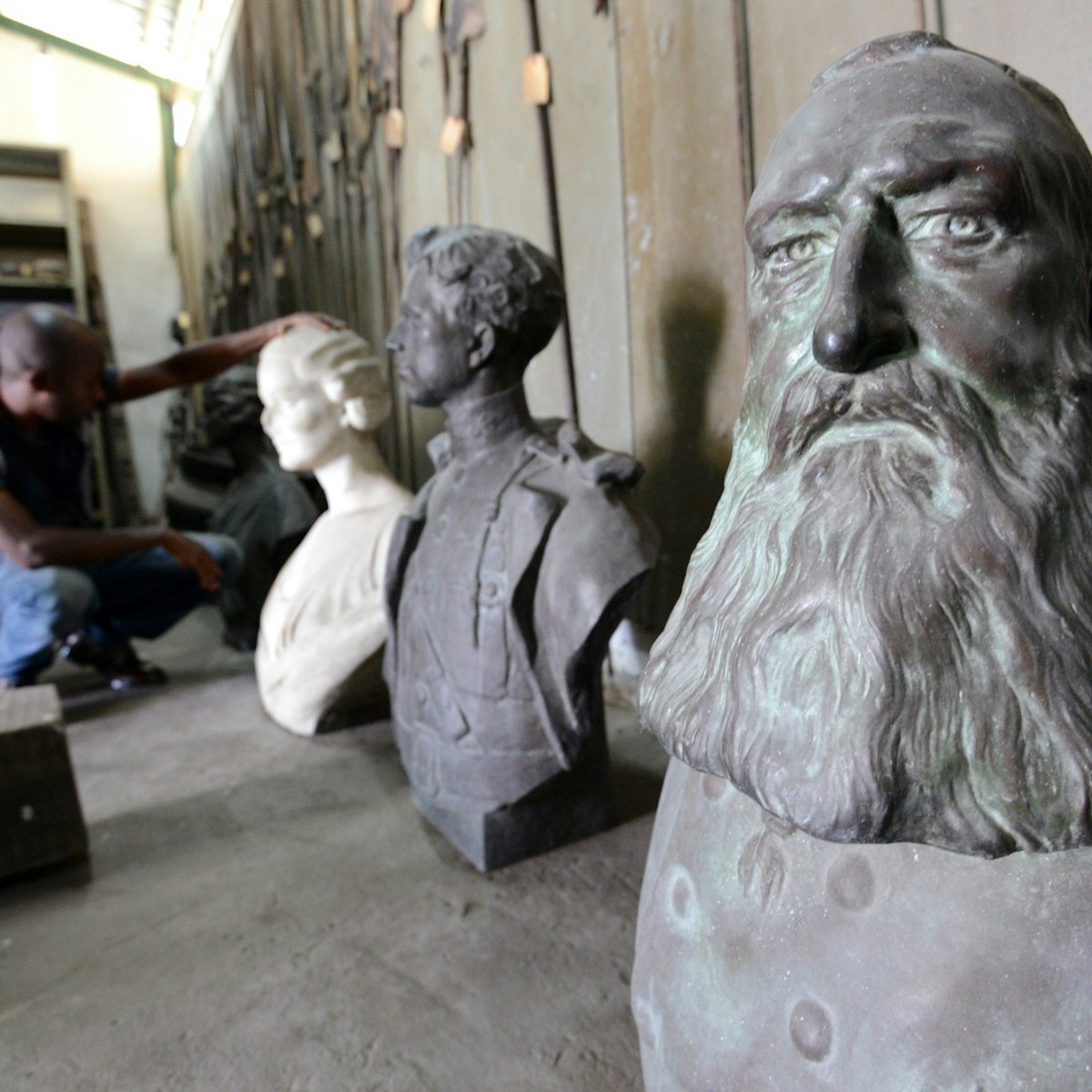
Musée National de Kinshasa
This amazing ethnographic archive comprising some 45,000 objects has been waiting patiently for its new home, a US$10 million prestige investment from…

Parc National de Kahuzi-Biéga
South Kivu's star attraction is this national park, where you can track habituated eastern lowland gorillas (Grauer’s gorillas) for just US$400 per person…

Chutes du Zongo
A popular day trip from Kinshasa despite the expensive 4WD hire (US$200) necessary to get here, the gorgeous 65m-high Zongo Falls are one of DRC's most…

Serpents du Congo
This excellent snake farm is located 28km from downtown Kinshasa and makes for a great day out. Owner Franck will gladly show you the poisonous and…

Senkwekwe Gorilla Orphanage
Provided you make it back from your gorilla track in a timely fashion, it should be possible to visit the world’s only mountain gorilla orphanage, which…
Latest stories from Democratic Republic of Congo
Filter by interest:
- All Interests
- Adventure Travel
- Art & Culture
- Beaches, Coasts & Islands
- Food & Drink
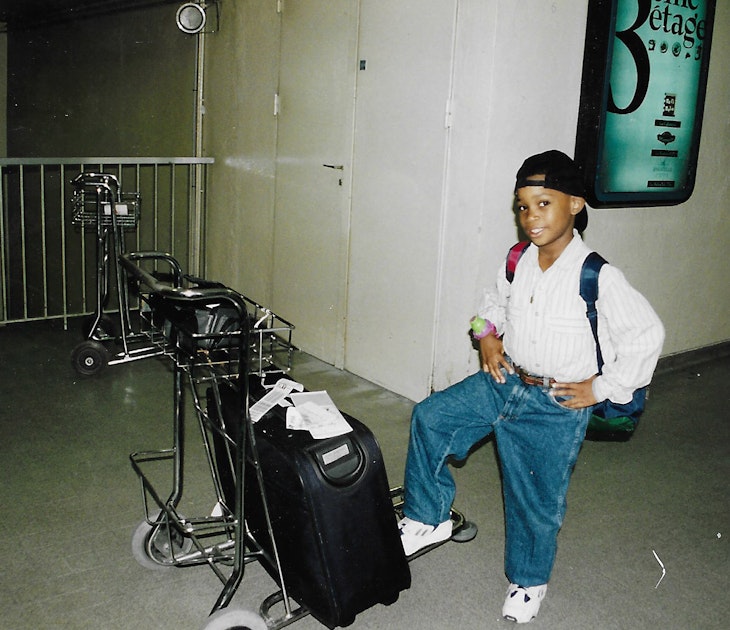
Jun 4, 2020 • 10 min read
Traveler, Abongi Gael Bokongo, shares how fleeing a civil war with his family shaped how he travels the world.
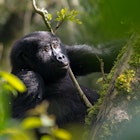
Dec 20, 2019 • 2 min read
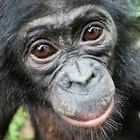
Nov 17, 2017 • 2 min read

Dec 12, 2011 • 3 min read
Purchase our award-winning guidebooks
Get to the heart of Democratic Republic of Congo with one of our in-depth, award-winning guidebooks, covering maps, itineraries, and expert guidance.
Democratic Republic of Congo and beyond
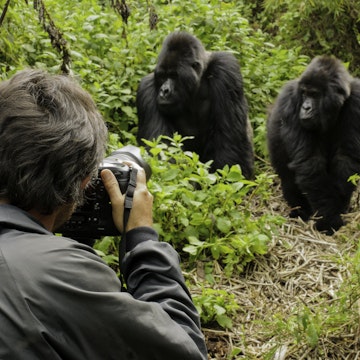
- BUCKET LISTS
- TRIP FINDER
- DESTINATIONS
- 48HR GUIDES
- EXPERIENCES

- DESTINATIONS South Carolina 3 Ways to Get Wet and Wild in Myrtle Beach BY REGION South America Central America Caribbean Africa Asia Europe South Pacific Middle East North America Antarctica View All POPULAR Paris Buenos Aires Chile Miami Canada Germany United States Thailand Chicago London New York City Australia
- EXPERIENCES World Wonders 14 Landmarks That Should Be Considered World Wonders BY EXPERIENCE Luxury Travel Couples Retreat Family Vacation Beaches Culinary Travel Cultural Experience Yolo Winter Vacations Mancations Adventures The Great Outdoors Girlfriend Getaways View All POPULAR Cruising Gear / Gadgets Weird & Wacky Scuba Diving Skiing Hiking World Wonders Safari
- TRIP FINDER Peruvian Amazon Cruise BY REGION South America Central America Caribbean Africa Asia Europe South Pacific Middle East North America Antarctica View All POPULAR Colors of Morocco Pure Kenya Costa Rica Adventure Flavors of Colombia Regal London Vibrant India Secluded Zanzibar Gorillas of Rwanda
- Explore Bucket Lists
- View My Bucket Lists
- View Following Bucket Lists
- View Contributing to Lists
Congo Travel Guide

The Republic of the Congo or Congo-Brazzaville, used to distinguish itself from its bigger and more chaotic neighbor, the Democratic Republic of the Congo, lies on the opposite side of the Congo River . It is bordered by not only the DR of the Congo, but also by Gabon, CAR, Cameroon, and the Angolan exclave of Cabinda. It boasts virgin forests that are home to the world’s largest population of wild chimpanzees and gorillas, as well as raging rapids and picturesque waterfalls. The forests are home to indigenous tribes who are living peacefully, upholding their ancestral traditions.
The Congo is an adventure-filled destination less traveled due to long years of civil conflict which has stunted its tourism industry. Not many people know about its stunning coastal strip. Its capital city, Brazzaville, is actually dotted with French-flavored attractions. Tucked in the jungle is one of the largest, yet least known tropical paradises in Africa called Odzala National Park. From surfing beaches to whitewater rapids and lively wildlife, the Congo has plenty to offer. Civil wars, military and ethnic conflicts, and feuds over its offshore oil reserves have died down, and Congo-Brazzaville now enjoys peace that many locals hope becomes permanent. Whether you are interested in the raging rapids, the graceful capital city, the beautiful Lac Blue, or the energetic nightlife in the coastal towns, you will not run out of things to explore.
There are some good hotels in the capital city of Brazzaville and in popular destinations like Pointe-Noire and Loubomo. Elsewhere in the country, accommodation options are limited. Camping is reserved for the brave and it’s only possible in the southeast region of Moruya, in an area known as Cargo-Point. No matter how experienced you are in sleeping under the stars, it is essential to hire a guide when choosing the great outdoors as your lodging.
The Congo is served by Maya-Maya Airport, with international flights mostly offered by Air France and Ethiopian Airlines. Unfortunately, there are no direct flights from any American or European countries, but connections can be made through African hubs such as Cameroon and Nairobi. Driving is a more practical way to get around town and renting a car is easy, with an abundance of service providers in Brazzaville. The capital is also served by taxi and minibus services, but most locals use inland steamers to get around. The rail system also serves major towns.
- Tour the colorful city of Brazzaville, with its marvelous mosques, temples, gardens, and riverside
- Brave the Congo’s whitewater rapids
- Enjoy water sports on the Kouillou and Congo rivers
- Fish at Lac Bleu
- Visit old churches, mosques, and ancient cities like M’Bé
- Sightsee around Trou de Dieu and the Loufoulakari Falls
- Admire beautiful species in the Valley of Butterflies
- Explore Pointe-Noire and its coastal splendor
Click here to learn about Things to Do in the Congo
- Things To Do
- Attractions
- Food And Restaurants
- Shopping And Leisure
- Transportation
- Travel Tips
- Visas And Vaccinations
- History And Culture
- Festivals And Events
World Wonders
These are the most peaceful countries on the planet, the great outdoors, deserts in bloom: 6 spots for springtime wildflower watching, how to plan a luxury safari to africa, british columbia, yoho national park is the most incredible place you've never heard of.
- Editorial Guidelines
- Submissions
The source for adventure tourism and experiential travel guides.
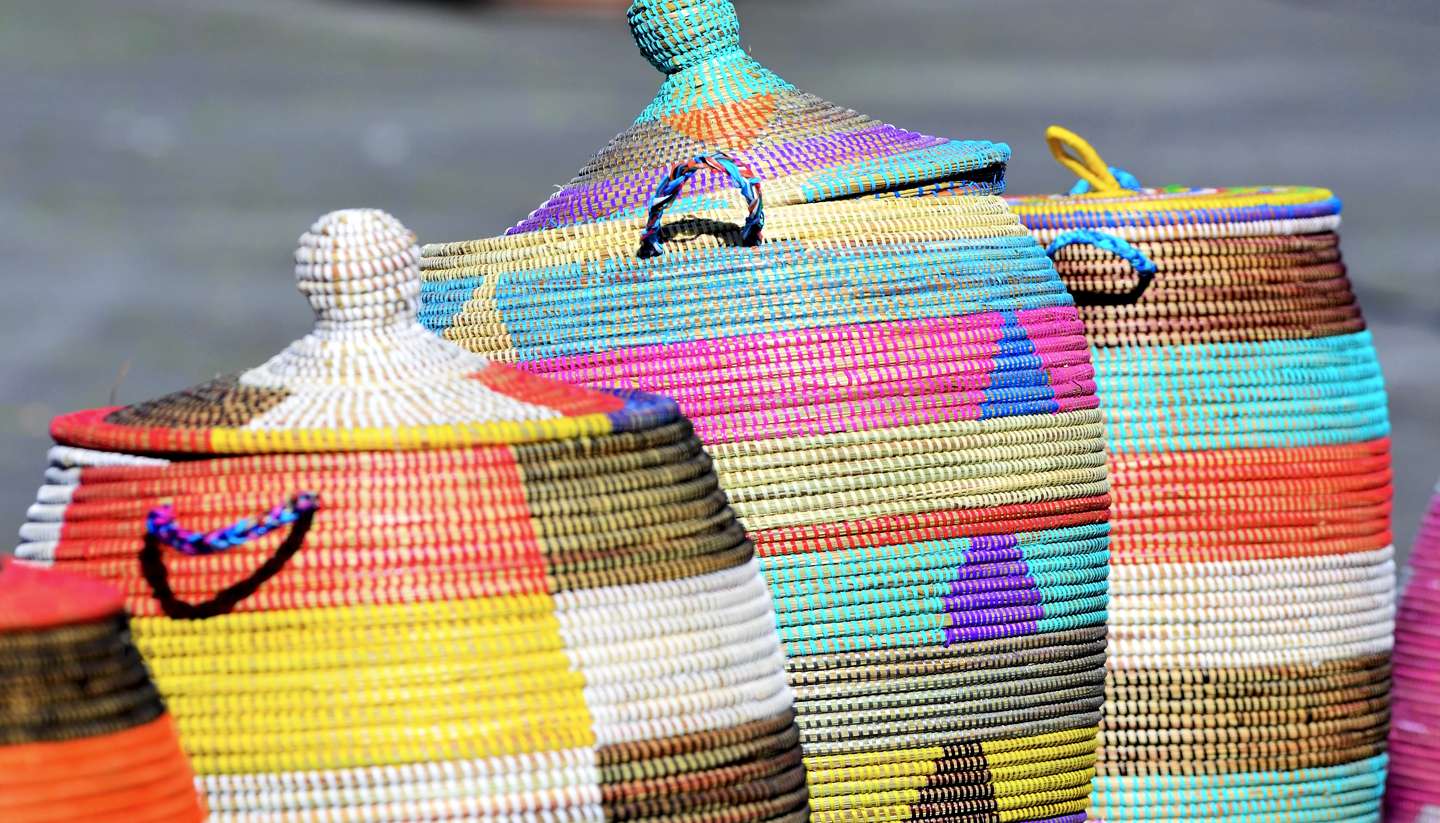
Introducing Republic of Congo
- About Republic of Congo
- Images of Republic of Congo
- History, language & culture
- Weather & geography
- Doing business & staying in touch
Plan your trip
- Travel to Republic of Congo
- Where to stay
While you’re there
- Things to see & do
- Shopping & nightlife
- Food & drink
- Getting around
Before you go
- Passport & visa
- Public Holidays
- Money & duty free
Book your flights
Things to see and do in Republic of Congo
Attractions in republic of congo, delve into congo’s history at diosso.
Around 20km (12 miles) from Pointe Noire are the villages of Loango and Diosso. Loango was a major embarkation port for slaves during the era of the transatlantic slave trade. The Gorges of Diosso, spectacular cliffs formed by the erosion of the sea and the wind, are well worth visiting, as are some of the remote and idyllic palm-fringed beaches nearby.
Experience Congo’s biodiversity at Conkouati-Douli National Park
Not far from Pointe Noire, stretching from the Atlantic coastline into densely-forested mountains, Conkouati-Douli is Congo's most diverse park and recent investment in conservation has seen a rejuvenation of wildlife stocks previously decimated by poaching. Gorillas, elephants, buffalo and chimpanzee can be seen here, as can sea turtles laying eggs on the beach.
Explore bustling Brazzaville
The small, crumbling Congolese capital is situated on the banks of the mighty Congo River, with clear views across the water to DRC's capital Kinshasa on the opposite bank. Brazzaville has a number of pulsing markets and a surprisingly vibrant arts and culture scene, as well as some fascinating colonial relics and memorials.
Get lost in D’Odzala National Park
One of the oldest parks in Africa, the arrival of African Parks and Wilderness Safaris has breathed new life into D'Odzala after decades of turmoil. Remote even by Congo's standards, the only way to access the park is on an exclusive fly-in safari. Activities include face-to-face encounters with habituated lowland gorilla families, accompanied by local BaAka (pygmy) guides.
Kick back in Pointe Noire
Pointe Noire is Congo's economic capital, but it often feels more like a small seaside town. The beachfront itself is rundown and relatively underdeveloped, but therein lies much of its charm. And there are still a number of good spots for a seaside sundowner. Away from the beach, the city has a bustling market and a few good restaurants.
Marvel at the Loufoulakari Falls
Find beautiful panoramic views of the verdant surrounding countryside at the Loufoulakari Falls, the confluence of the Congo and Loufoulakari rivers. A bumpy 80km (50-mile) drive from the capital Brazzaville, Loufoulakari is held to be the most impressive falls in the region and well worth a day trip.
Ride ‘La Gazelle’
This air-conditioned train runs between Brazzaville and Pointe Noire a few times a week and is a much more immersive experience than taking the short flight. Though it's a slow and arduous journey, there is some striking scenery along the way. Do spend time some considering the human cost of this journey: the construction of this historic train line claimed the lives of more than 17,000 Congolese.
Stroll around Linzolo
The first Catholic church in Congo was built in 1882 by a French priest and is located in Linzolo, 30km (19 miles) from the capital. The small city is also home to the regional seat of the World Health Organization and a very good market.
Track gorillas in Nouabalé-Ndoki National Park
Once referred to by National Geographic as the world's 'Last Eden', this vast and remote park in the northern corner of Congo is home to lowland gorillas, forest elephants and chimpanzees among other interesting fauna found in the swampy rainforest. The park is a UNESCO World Heritage Site.
Unwind at Les Rapides
Just west of Brazzaville, at Les Rapides, the Congo River can be observed in all its power and glory. These wide and untamed falls are best observed with a frosty beer in hand in the leafy garden of the bar at the river's edge, which is a popular weekend hang out with locals and tourists alike.
Tourist offices

Book a Hotel
© Columbus Travel Media Ltd. All rights reserved 2024
- You are here
- Guide to Africa
Congo Guide
Parent page.
- African Countries
- Congo Visitor Information
- Congo Tourist Offices and Embassies
Related pages
- Accommodation
Link to this page
- Get the html code
Introduction
Republic of Congo map with capital Brazzaville click to zoom The Congo is located on the western coastline of Central Africa, bordering with the Southern Atlantic Ocean to the west, Angola to the South, Democratic Rep of Congo (formerly Zaire) to South and east, Central Africa Republic and Cameroon to the north, and Gabon to the northwest. The terrain consists of a narrow low-lying coastal plain, of mainly grassland. Further inland are the highlands and the northern region consists mainly of equatorial rainforest.
Africa Guide


IMAGES
VIDEO
COMMENTS
For more details about health entry requirements and recommended vaccinations, see TravelHealthPro’s Republic of Congo guide. Customs rules. ... The World Travel Guide (WTG) is the flagship digital consumer brand within the Columbus Travel Media portfolio. A comprehensive guide to the world’s best travel destinations, its print heritage ...
The Republic of the Congo is a country in Central Africa. It is commonly referred to as Congo-Brazzaville to distinguish itself from its giant neighbour, the Democratic Republic of the Congo (Congo-Kinshasa).
Congo Travel Information and Guide | Bradt Guides. Those who make the effort to visit the Congos will be surprised at a genuinely hospitable group of people who have adapted to life in difficult situations. Optimism is easy to find, and foreigners arriving with the same attitude will not be disappointed.
Get to the heart of Democratic Republic of Congo with one of our in-depth, award-winning guidebooks, covering maps, itineraries, and expert guidance. Shop Our Guidebooks
Brave the Congo’s whitewater rapids; Enjoy water sports on the Kouillou and Congo rivers; Fish at Lac Bleu; Visit old churches, mosques, and ancient cities like M’Bé; Sightsee around Trou de Dieu and the Loufoulakari Falls; Admire beautiful species in the Valley of Butterflies; Explore Pointe-Noire and its coastal splendor
World Travel Guide > Guides > Africa > Republic of Congo. Book your flights. Things to see and do in Republic of Congo. Attractions in Republic of Congo. Delve into Congo’s history at Diosso. Around 20km (12 miles) from Pointe Noire are the villages of Loango and Diosso.
Congo, a comprehensive guide. Maps, Culture, Hotels, Holidays, Safaris, Travel information, Photo Library and more...
Honest & easy to read guide on the vast central African nation, DR Congo. Includes our interactive map & highlights to help you make the most of the beautiful rainforest and incredible wildlife. Learn more in our Democratic Republic of the Congo travel guide.